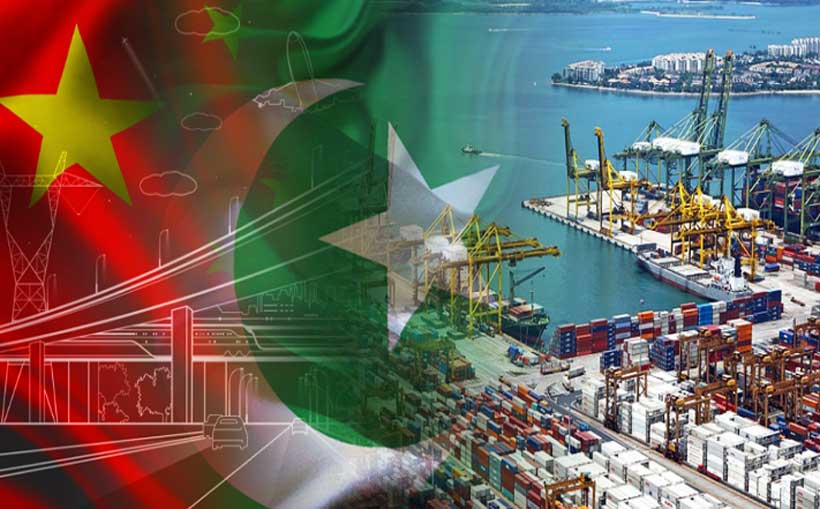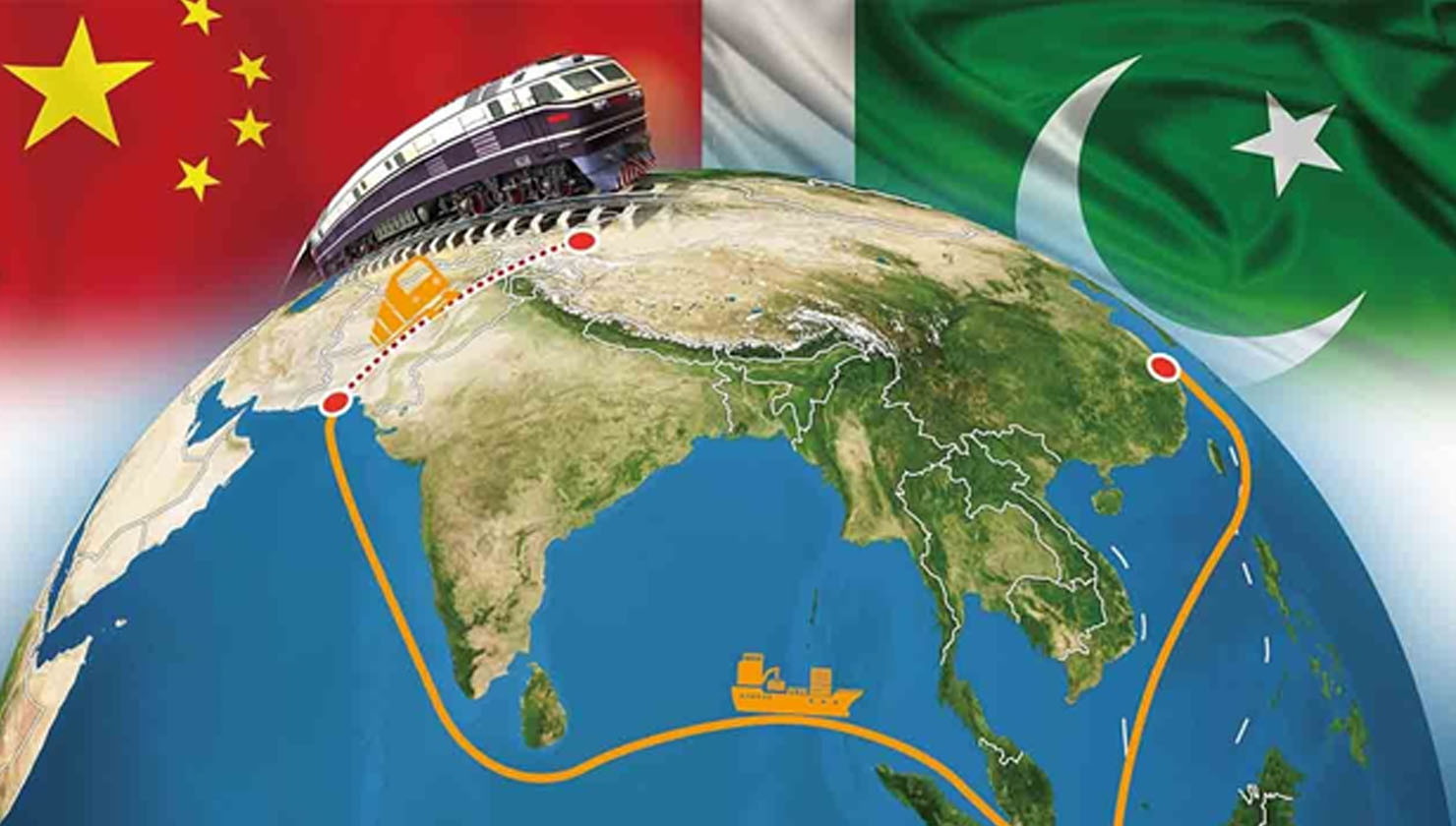The China-Pakistan Economic Corridor (CPEC) also known as the CPEC 2.0 has entered a crucial second phase, marking a significant evolution in the strategic partnership between China and Pakistan. This phase focuses on establishing Special Economic Zones (SEZs), modernizing agriculture, and developing the IT and mining sectors. These initiatives aim to amplify Pakistan’s economy, create jobs, and attract substantial foreign direct investments, particularly from the Middle East.
The establishment of SEZs is central to this new phase. These zones are expected to attract investment by providing tax incentives and facilitating business operations. Key SEZs include Rashakai in Khyber Pakhtunkhwa, Dhabeji in Sindh, and Allama Iqbal in Punjab. These zones will house industries ranging from textiles to technology, aiming to boost local production and exports. It was also agreed to fast-track the work on the ML-I project, KKH realignment and, the Sukkur- Hyderabad motorway which is the only missing link within the Karachi-Peshawar motorway network.
Agriculture, a backbone of Pakistan’s economy, is set for modernization under CPEC. This includes introducing advanced farming techniques, high-yield crops, and better irrigation systems. Collaborative projects between China and Pakistan aim to increase agricultural productivity and food security. Chinese technology and expertise in agricultural mechanization and water management are crucial to these efforts. The IT sector is another focus area, with plans to establish technology parks and incubators. These initiatives aim to foster innovation, support startups, and enhance digital infrastructure. The mining sector, rich in minerals like copper and gold, is also set for development. Joint ventures will explore and exploit these resources, contributing to economic growth.

Gwadar port remains a pivotal element of CPEC. Its development into a hub for oil storage and the petrochemical industry will enhance regional connectivity and trade. The port’s strategic location on the Arabian Sea makes it vital for China’s Belt and Road Initiative (BRI), providing a direct route for Middle Eastern oil to China, bypassing the longer maritime route through the Malacca Strait. Energy cooperation under CPEC is extensive, with numerous power projects already completed or underway. These projects address Pakistan’s energy deficit, ensuring a stable supply of electricity to fuel industrial and economic activities.
The second phase of CPEC is designed to attract investments from the Middle East. The improved infrastructure and economic zones present lucrative opportunities for Gulf investors. Middle Eastern countries, particularly Saudi Arabia and the UAE, have shown interest in investing in various CPEC projects, including refineries, petrochemicals, and agriculture. As petrochemicals are the main area of specialty for middle eastern countries, they have shown significant interest in these programs. Despite its economic potential, CPEC faces security challenges. Militant attacks in Balochistan and other regions pose risks to the project’s infrastructure and personnel. Pakistan has taken measures to enhance security, including deploying special forces and establishing a dedicated security division for CPEC. China remains committed to supporting Pakistan in these efforts, recognizing the strategic importance of CPEC for regional stability. With the launch of the new operation “Azm e Istehkam” operations are also being carried out across Pakistan, to counter Non state actors.
CPEC’s success has significant economic and geopolitical implications. Economically, it promises to transform Pakistan into a regional trade hub, boosting its GDP and improving living standards. Geopolitically, it strengthens China-Pakistan ties while positioning China as a key player in South Asian and Middle Eastern affairs. The development of Gwadar port enhances China’s maritime influence and secures its energy supply routes. The collaboration between China and Pakistan under CPEC is a model for other BRI projects. It demonstrates how infrastructure development can drive economic growth and foster international partnerships. As CPEC progresses, it will likely attract more countries to participate in similar initiatives, promoting regional connectivity and economic integration.
On the contrary while the Chinese Belt and Road Initiative (BRI) and the China-Pakistan Economic Corridor (CPEC) are widely recognized as catalysts for economic development, they also pose significant challenges to indigenous cultures, potentially causing societal stress. The BRI, an ambitious infrastructure and economic development project launched by China in 2013, aims to enhance global trade and stimulate economic growth across Asia, Africa, and Europe. The CPEC, a flagship project of the BRI, is a massive network of roads, railways, and pipelines connecting China’s Xinjiang region to Pakistan’s Gwadar Port. These initiatives promise substantial economic benefits, including improved infrastructure, increased trade, and job creation, which can contribute to the overall development and prosperity of participating countries. However, these projects come with a complex set of cultural and social implications. The large-scale infrastructure development and the influx of foreign investment and workforce can lead to significant cultural shifts in the regions involved. As globalization intensifies, the exposure to foreign cultures and practices can result in the erosion of traditional values and customs that have been preserved by indigenous communities for generations. The process of globalization often brings with it the dominance of a more homogenized, global culture, which can overshadow and diminish the unique cultural identities of local populations. For instance, the introduction of new business practices, languages, and lifestyles can marginalize indigenous languages, customs, and social norms. This cultural displacement can lead to a sense of loss and identity crisis among local populations, causing societal stress and tensions.
Moreover, the rapid pace of development can lead to socio-economic disparities, where the benefits of these projects are unevenly distributed. While some segments of society may experience significant economic gains, others, particularly those in rural or marginalized communities, may be left behind. This disparity can increase existing inequalities and create social divisions, further contributing to societal stress. Environmental degradation is another critical issue associated with these large-scale projects. The construction of infrastructure such as highways, railways, and ports can disrupt local ecosystems and displace communities that rely on natural resources for their livelihoods. This environmental impact can have a profound effect on the cultural practices and lifestyles of indigenous populations, who often have a deep connection to their natural surroundings.
Additionally, the influx of foreign workers and businesses can strain local resources and infrastructure, leading to overcrowding and increased competition for jobs and services. This can create friction between local populations and foreign entities, resulting in social tensions and conflicts.

The second phase of CPEC marks a significant step in China-Pakistan cooperation. By focusing on industrialization, agriculture, technology, and energy, it aims to boost Pakistan’s economic development and attract foreign investments. Despite security challenges, the commitment of both nations to CPEC remains strong, promising a future of shared prosperity and regional stability. The involvement of Middle Eastern investors further underscores the project’s global significance and potential for fostering broader economic ties. While the Chinese BRI and CPEC projects hold significant potential for economic development and regional integration, they also expose indigenous cultures to the forces of globalization, leading to cultural erosion and societal stress. It is crucial for policymakers and stakeholders to consider these cultural and social implications and strive for a balanced approach that promotes economic growth while preserving and respecting the unique cultural identities of local communities. Ensuring that the benefits of development are equitably distributed, and that environmental and social impacts are carefully managed will be key to mitigating the negative effects of globalization and fostering sustainable and inclusive development.

Research Associate, Pakistan House



